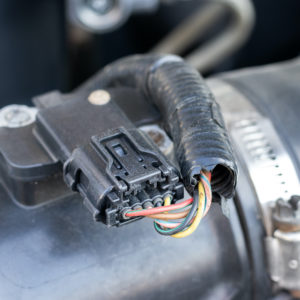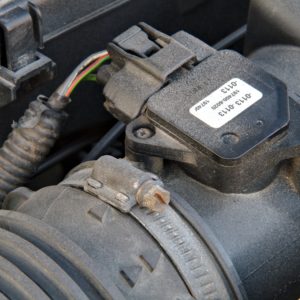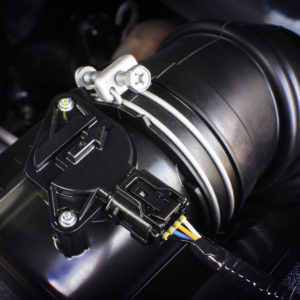An on-board diagnostic or OBD-II code alerts you to the potential issues your vehicle may have. But to solve the code, you must first know what issue has caused it to be logged in the system. If you’re finding it difficult to figure out what code P010B means, you’ve come to the right place. Read on to learn about its possible triggers and common symptoms.
What Does the P010B Code Mean?
Diagnostic trouble code (DTC) P010B stands for “Mass or Volume Air Flow “B” Circuit Range/Performance.” This error code is set when the powertrain control module (PCM) perceives a potential problem with the mass air flow (MAF) sensor or its circuit. It is specifically logged when the PCM detects that the signal from the MAF sensor exceeds factory specifications.
The “B” circuit specified in this code varies depending on the make and model of the car. Refer to a repair manual specific to your vehicle to determine the affected circuit.

The MAF sensor is used to measure the volume and density of air entering the engine. It is located on the engine’s air intake tract opposite the air filter. The PCM uses the data provided by the MAF sensor, along with the input from the other sensors, to determine the amount of fuel needed to run the engine properly.
However, if the signal the PCM received from the MAF sensor is determined to go over the expected range, the PCM will log error code P010B. Depending on the severity of the problem, other DTCs may also get stored, such as codes P010A, P010C, P010D, and P010E.
Make sure you fully understand mass air flow before you attempt any DIY troubleshooting of code P010B.
Note: The definition of code P010B may be different depending on the vehicle manufacturer. Consult the appropriate repair manual or repair database for the exact code definition.
What are the Possible Causes of the P010B Code?
P010B is a generic code, so it can have several causes. Here are the most common:
- Contaminated MAF sensor
- Defective MAF sensor
- A leak in the air intake
- Wiring issue
- Faulty PCM
- Blocked catalytic converters (usually in GMC/Chevrolet models)

What are the Common Symptoms of the P010B Code?
You may notice the following symptoms if you own a vehicle with a stored P010B trouble code:
- Check engine light is on
- Poor engine performance
- Black exhaust
- Poor fuel mileage
How to Diagnose the P010B Code
Further complications can be prevented by troubleshooting the P010B error code immediately. However, diagnosing this code can be difficult as it shares numerous triggers and symptoms with other DTCs. All cars are built differently, so the diagnostic steps will vary depending on the vehicle’s make and model.

The procedure for diagnosing a P010B on a Nissan may prove different from testing for the same code on a Land Rover. To ensure you’re doing the right steps, always refer to a repair manual specific to your vehicle. However, if you feel that your automotive know-how is still lacking, it would be best to leave the diagnosis to the experts.
How to Fix the P010B Code
Code P010B may be set in vehicles of varying makes and models. It may even share similar causes and symptoms with other DTCs. However, this code can’t be resolved with a blanket solution. Each automaker builds their vehicles differently, so a single solution for different models that have logged the same codes may not work.
Always refer to your vehicle’s factory repair information before DIY-ing any repairs. Alternatively, you may opt to bring your vehicle to an auto repair shop for proper diagnosis and repair.
How to Get a Quality Replacement Mass Air Flow Sensor
If a contaminated or defective mass air flow sensor is triggering DTC P010B in your vehicle, it might be time to replace it. Otherwise, your vehicle might continue to have poor engine performance and black exhaust smoke. The black exhaust in particular might cause your vehicle to fail emissions tests. The great thing is that you can purchase a quality replacement MAF sensor at CarParts.com.
CarParts.com takes pride in the wide range of quality parts we offer from trusted aftermarket brands. We’re not afraid to have a price match guarantee in place too. This means if you find one of our competitors selling the same part online for cheaper, we’ll match that price on the spot. In addition to this, our 60-day return policy is in place to give you that extra boost of confidence when ordering online.
Don’t delay. Replace that defective MAF sensor and address DTC P010B. Shop for a quality replacement mass air flow sensor at CarParts.com now.
Products Mentioned in this Guide
Any information provided on this Website is for informational purposes only and is not intended to replace consultation with a professional mechanic. The accuracy and timeliness of the information may change from the time of publication.


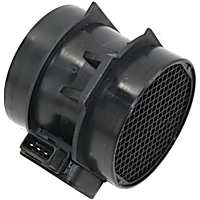 Mass Air Flow Sensor
Mass Air Flow Sensor
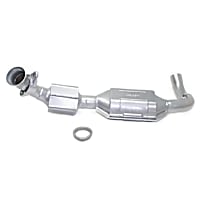 Catalytic Converter
Catalytic Converter

